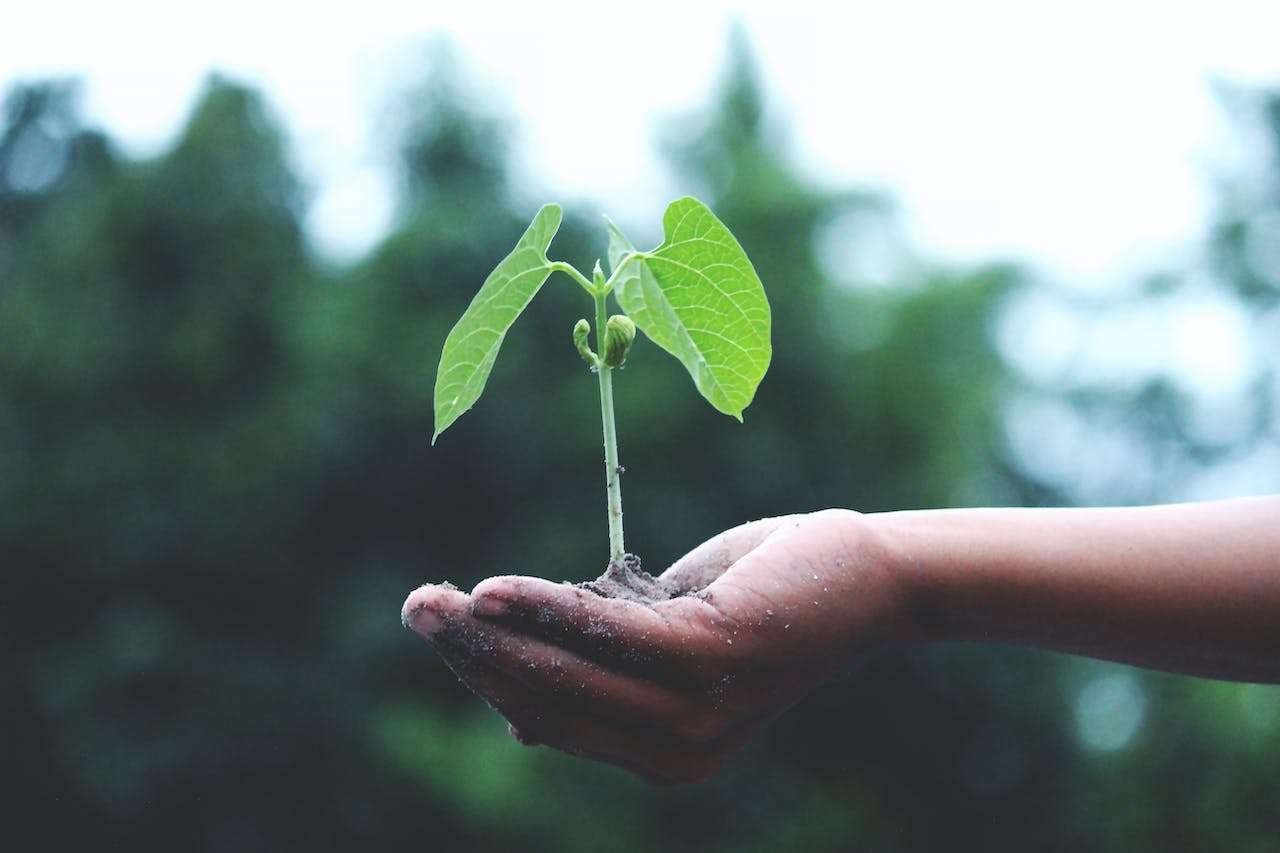Every day, we are encouraged by governments, corporations, and environmental advocates to adopt more sustainable practices and lifestyles. The underlying reasons for this push towards eco-friendliness include the desire for a healthier environment, improved public health, and the potential for significant savings on energy costs. By heeding their advice and committing to a green way of living, we stand to mitigate the issues of deforestation and the impacts of climate change and reap the additional rewards of dwelling in an environment with reduced pollution. This shift towards sustainability promises many benefits, including cleaner air and water, contributing to a higher quality of life for all.
Tree preservation is one of the ways of going green. When we prevent unnecessary deforestation, we allow the firms that deal with wood to have better materials. For instance, a quick review of these top bamboo sunglasses clearly shows that wood makes excellent things. Wooden materials are durable and comfortable to use, and they are affordable. Also, be sure to consider options like skip bin hire Sydney.
So, how can we adopt a greener life? Everyone can take four practical steps to have an environmentally friendly life.
Eliminate Plastic
Eliminating plastic from our daily lives is crucial to achieving a more sustainable and environmentally friendly lifestyle. Despite its widespread use and convenience due to its lightweight and versatile nature, plastic has been identified as a significant environmental pollutant. One of the primary challenges with plastic is its durability; it does not quickly degrade or decompose, leading to long-term pollution issues that mar the natural beauty of our surroundings and pose severe threats to wildlife and ecosystems. Here are several effective strategies to reduce and ultimately eliminate plastic usage:
- Opt for Reusable Alternatives: Switch from single-use plastic items to reusable versions. There are plenty of reusable materials that you can use to make reusable bags. For instance, carry a reusable water bottle, coffee cup, and shopping bags. Invest in containers made from sustainable materials like glass, stainless steel, or bamboo for food storage and packing lunches.
- Choose Products with Minimal or No Plastic Packaging: When shopping, look for products that use minimal or eco-friendly packaging. Many stores offer bulk buy sections where you can fill your containers with products like grains, nuts, and spices, reducing the need for plastic packaging.
- Support Eco-conscious Brands: Patronize companies committed to reducing plastic in their products and packaging. Many companies now use biodegradable materials or are part of recycling programs, showing their commitment to environmental sustainability.
- Recycle Properly: For the plastic items you use, ensure they are recycled correctly according to local recycling guidelines. Proper recycling helps reduce the amount of plastic waste that ends up in landfills and the environment.
- Educate Yourself and Others: Stay informed about the environmental impact of plastic and share your knowledge with friends and family. Awareness is the first step towards change, and educating those around you can have a ripple effect in reducing plastic usage.
Watch your energy consumption.
Another crucial step in leading a greener and more sustainable lifestyle is being mindful of energy consumption. There are plenty of ways that you can adopt to cut down your energy expenses and live an eco-friendly life. By adopting various energy-saving practices, you reduce your utility bills by getting your energy from gas marketer and contribute to environmental preservation. Here are some practical tips to help you cut down on your energy consumption and embrace a more eco-friendly way of living:
- Switch to LED Lighting: Replace traditional incandescent bulbs with energy-efficient ones. They consume significantly less energy and last longer, reducing the frequency of replacements.
- Unplug Electronics: Many electronic devices continue to draw power even when turned off. Use power strips or unplug devices when not in use to prevent energy wastage.
- Upgrade Appliances: Invest in energy-efficient appliances with the ENERGY STAR label. These appliances are designed to consume less energy while delivering the same performance.
- Seal Leaks and Insulate: Ensure your home is adequately insulated and sealed. This prevents drafts and helps maintain a consistent indoor temperature, reducing the need for excessive heating or cooling.
- Adjust Thermostat Settings: Use a programmable thermostat to regulate your home’s temperature. Lower the thermostat in winter and raise it in summer to reduce heating and cooling expenses.
- Harness Natural Light: Make the most of natural daylight by opening curtains and blinds during the day. This reduces the need for artificial lighting and saves energy.
- Limit Water Heater Usage: Lower the temperature of your water heater and consider installing a timer to heat water only when needed. This minimizes energy consumption for heating water.
- Use Energy-Efficient Windows: If possible, upgrade to energy-efficient windows that provide better insulation and reduce heat loss or gain.
- Reduce Phantom Loads: Be aware of appliances and chargers that consume energy when unused. Unplug or use smart power strips to manage these “phantom loads.”
- Invest in Renewable Energy: Consider installing solar panels or wind turbines to generate electricity from renewable sources, reducing your reliance on fossil fuels.
- Opt for Energy-Efficient Transportation: Choose eco-friendly modes of transportation such as biking, walking, carpooling, or driving fuel-efficient vehicles to reduce your carbon footprint.
- Practice Energy Conservation Habits: Encourage your family members to be conscious of energy usage. Simple habits like turning off lights when leaving a room, running appliances efficiently, and fixing leaks promptly can collectively make a significant impact.
By incorporating these energy-saving practices into your daily life, you save money and play a vital role in reducing greenhouse gas emissions and protecting our planet. Making a conscious effort to watch your energy consumption is crucial to living a greener and more sustainable life.
Learn to recycle
Recycling is the act of using the same product for more than one time. It involves modifying a waste product to make a better product. When you recycle, you will minimize the amount of waste and, thus, live in a greener environment. If you want to experience more about the beauty of nature, Celtic Titles can help you. Here are practical recycling tips:
- Understand what you can recycle- the most recyclable items include plastics, cardboard, glass, and aluminum
- Invest in dustbins- place a container in the very corner of your home so that you can keep all the waste in central places
- Recycle water- avoid pouring dirty water in all areas of your compound. Instead, you can pour it in your flowerbed or on your farm.
- Recycle food- food recycling is also known as food composting
- Purchase the recycled products- support the recycled products by buying them
Reduce your fuel consumption.
Fuel consumption is a crucial concern to everyone these days. First, engine fuels produce harmful emissions that pollute the air. Too much pollution makes the environment unsafe for both humans and animals. Secondly, fuel is expensive, and the prices seem to rise steadily. Spending less fuel would, therefore, help you to save. These tips will help you save on car fuel:
- Avoid unnecessary car trips- you can walk for the shorter distances
- Use the cruise controls when driving on highways
- Replace the dirty filters in your car with newer ones
- Reduce the air conditioning of your vehicle
- Use the public means of transport if possible
Fun facts when having a greener life
- Tree Power: One large tree can absorb as much as 48 pounds of carbon dioxide annually.
- Recycling Aluminum: Recycling a single aluminum can save enough energy to power a television for three hours.
- Solar Energy Potential: In just one hour, the sun provides enough energy to meet global energy needs for an entire year.
- LED Lighting Efficiency: LED light bulbs use up to 80% less energy than traditional incandescent bulbs and can last up to 25 times longer.
- Reusable Shopping Bags: A single reusable shopping bag can replace hundreds of disposable plastic bags over its lifetime.
- Electric Cars: Electric vehicles (EVs) produce zero tailpipe emissions and are incredibly energy efficient.
- Upcycling Creativity: Upcycling involves turning old or discarded items into something new and valuable, reducing waste, and repurposing materials.
- Carbon Offsetting: Some individuals and companies purchase carbon offsets to compensate for emissions, supporting reforestation and renewable energy development projects.
Conclusion
Adopting a greener lifestyle through the outlined four steps is a personal commitment to healthier living and a significant contribution to the global effort of environmental conservation. Individuals can live an eco-friendly life by integrating sustainable living practices, eco-friendly habits, waste reduction strategies, and supporting renewable energy. These steps benefit the environment and enhance personal well-being, save costs in the long run, and foster a sense of community and responsibility towards our planet. As we strive to make these changes, it’s important to remember that every small action counts, and collectively, we can drive significant positive change for a sustainable and greener future.



